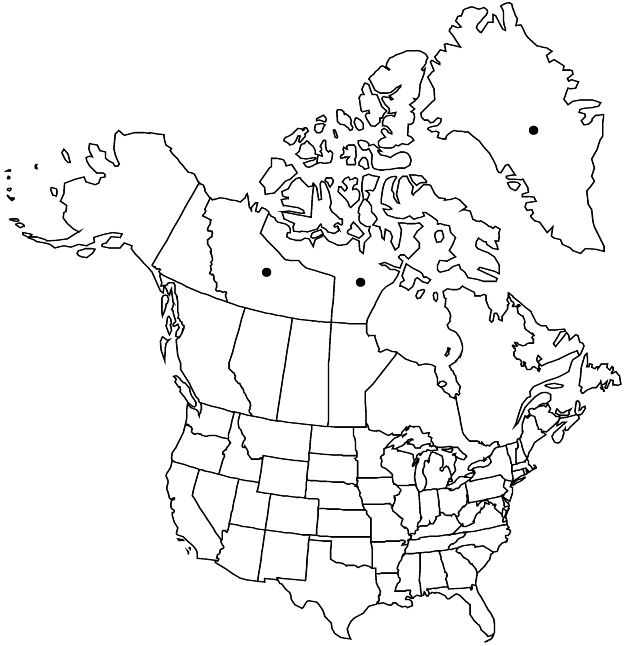Potentilla uschakovii
Bot. Zhurn. (Moscow & Leningrad) 73: 1613. 1988.
Caudex branches often sheathed with marcescent whole leaves. Stems ascending to nearly erect, 0.3–1.5 dm. Basal leaves often both ternate and palmate or subpalmate on same plant, 1–5 cm; petiole 0.5–3 cm, long hairs sparse to dense, ± appressed to ascending, (1–)1.5–2.5 mm, soft to ± weak, smooth, short hairs absent or sparse, crisped(/cottony) hairs sparse to common, glands absent or sparse; leaflets 3–5, proximalmost separated by 0–2 mm, central broadly elliptic to obovate, 0.5–2 × 0.3–1.4 cm, petiolules ± 1 mm, distal 2/3 to nearly whole margin incised 2/3–3/5+ to midvein, teeth (2–)3–4 per side, 3–5 mm, apical tufts 1–1.5 mm, abaxial surfaces grayish white to white, long hairs common to abundant, cottony(/crisped) hairs dense, short hairs and glands absent or obscured, adaxial grayish green to gray, long hairs abundant, 1–2 mm, soft (grading to cottony), short/crisped/cottony hairs common to abundant, glands sparse to common. Cauline leaves 0–1. Inflorescences 1–3(–4)-flowered, open, branch angle 20–40°. Pedicels 1–1.5 cm, proximal to 3 cm. Flowers: epicalyx bractlets lanceolate to ovate, 3–4 × 1–2 mm; hypanthium 2.5–3.5 mm diam.; sepals 3.5–5 mm, apex obtuse to subacute, glands sparse to common, often ± obscured; petals pale yellow, often overlapping, 5–7 × 5–8(–9) mm, distinctly longer than sepals; filaments 0.5–1.5 mm, anthers ± 0.5 mm; carpels 30–60, styles 0.8–0.9 mm. Achenes 1–1.3 mm.
Phenology: Flowering summer.
Habitat: Dry tundra meadows, gravel and loam ridges, loam flats, sandy bluffs
Elevation: 0–200 m
Distribution

Greenland, N.W.T., Nunavut, e Asia (Russian Far East).
Discussion
For discussion of probable parentage and resultant diagnostic characters, see discussion of 89. Potentilla pedersenii.
Selected References
None.